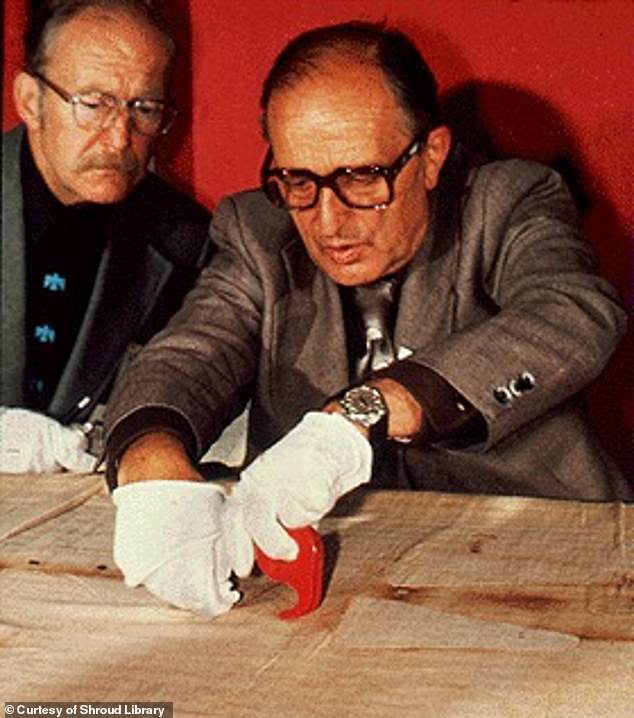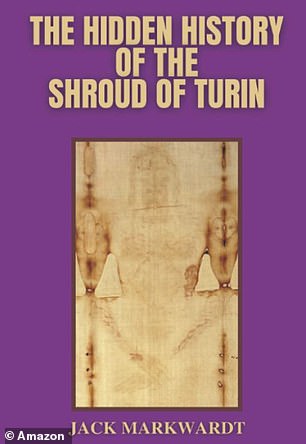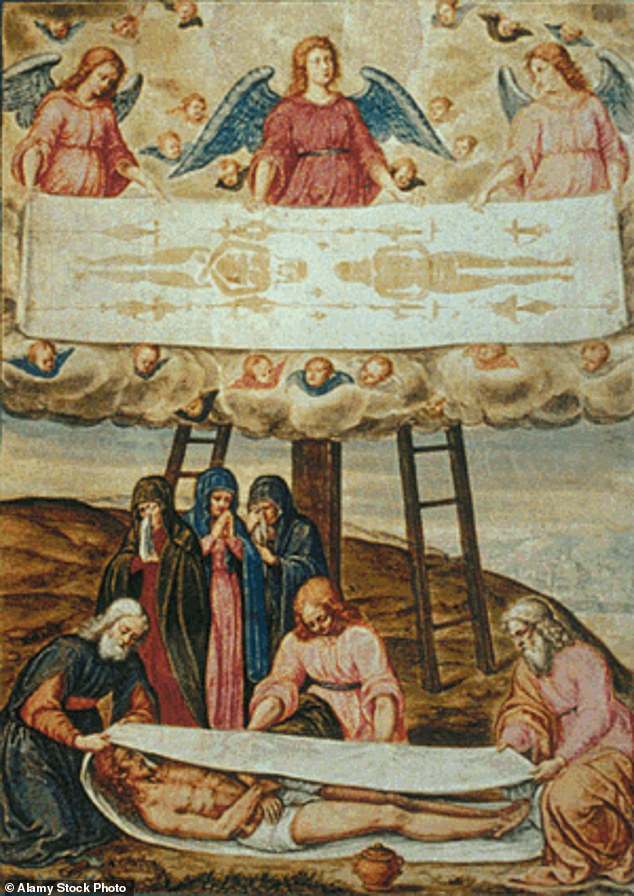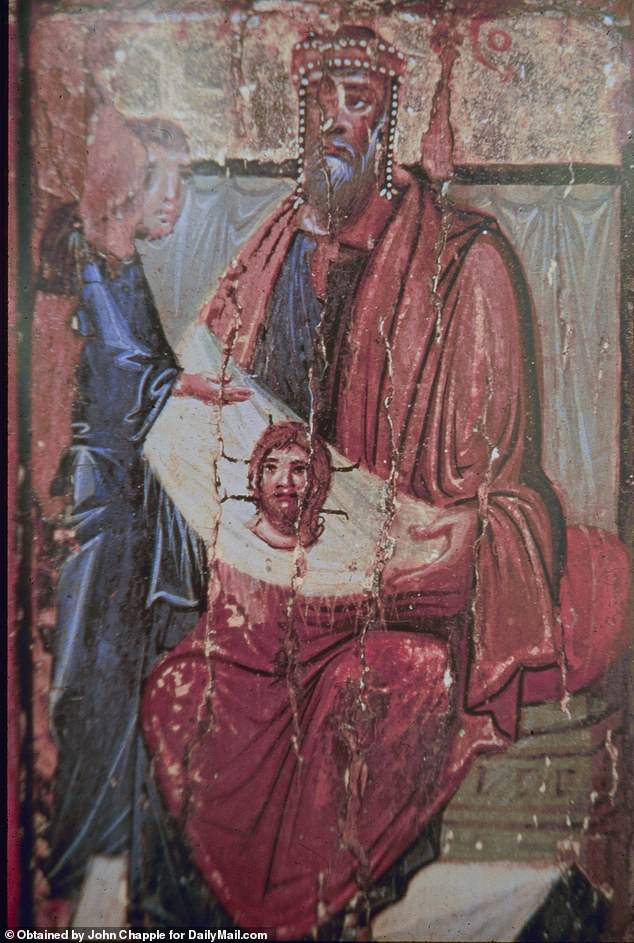Historical hints that the Turin Shroud is REAL and how it was hidden by early Christians, according to bombshell new book
A controversial linen shroud, believed by some to be the burial shroud in which Jesus Christ was buried, has baffled the world since it was made public in the 14th century.
This cloth, now known as the Shroud of Turin, first surfaced around 1355 AD in the small French village of Lirey. It attracted the interest of pilgrims because of its unusual ‘photo negative’ image of a crucified man.
However, there is little official information about the Shroud before this time, when it was brought to the dean of the village church by the French knight Geoffroi de Charny.
Skeptics have long pointed to this centuries-long gap in the Shroud’s early history as evidence of forgery, and carbon dating from 1989 further supports this idea.
But now that new research is casting doubt on the carbon dating, the question arises: could the Shroud of Turin have a “secret history” that explains why it has remained outside the historical archives for so long?
Markwardt argues that persecuted early Christians hid their faith for fear of persecution—a historical fact known as the “Discipline of the Secret.”

It was not until 1978 that the first physical samples of the cloth were allowed to be taken, which was done using adhesive tape to carefully remove particles of the front fibers. Dr. Max Frei, a Swiss criminologist, is seen taking samples from the shroud
That is the idea behind the provocative book ‘The Secret History of the Shroud of Turin’ by American lawyer and author Jack Markwardt.
Markwardt argues that there is a good reason why the shroud was originally hidden and that this mysterious cloth could be an authentic relic of the Passion of Christ.
Was the Shroud originally hidden out of fear?
In his book, Markwardt describes how early Christians hid their faith for fear of persecution – a historically documented practice known in Latin as Secret Discipline or the ‘Discipline of the Secret.’
This custom of the early Church in the 4th and 5th centuries required that certain doctrines be kept secret from unbelievers and even from those still learning the faith.

In The Secret History of the Shroud of Turin, American lawyer Jack Markwardt argues that there is a good reason why the shroud was initially hidden in early Christian history
The rules of Secret DisciplineAccording to Markwardt, this would have meant that the nascent Christian church would have hidden the existence of the Shroud.
“Then, shortly after Jesus’ death, his disciples, now organized as a church, were confronted with religious persecution,” he writes.
‘They obeyed his directives by maintaining secrecy and hiding all the pearls of the new faith from unbelievers, including the Shroud of Turin.’
But although the Shroud remained hidden, according to Markwardt, references to a very similar relic are found in several ancient sources, indicating its preservation and whereabouts during this period of extreme secrecy.
The author and lawyer claims that Peter himself took the shroud to Antioch: an ancient Greek city on the Orontes River, now part of the modern-day Republic of Turkey, with a legendary role in the medieval Crusades.
It is believed that from there the Shroud was (re)hidden deeper within the walls of Antioch, above the city’s Cherubim Gate.

Markwardt claims that early Christians hid the shroud out of fear
As evidence, Markwardt cites the apocryphal Gospel of the Hebrews, which refers to “the Lord” giving “the linen garment to the priest’s servant.”
Was the Shroud ‘hidden from view’?
Mysteriously, the bearded image on the cloth began to influence artworks depicting Jesus, while Markwardt claims that the shroud was hidden within the walls of Antioch. Before that, Jesus was depicted as a young man without a beard.
Why then does Jesus suddenly appear with a beard in Christian art from the 3rd through 5th centuries?
Author Ian Wilson has suggested that the contemporary text regarding the so-called ‘Image of Edessa’ may have referred to the Shroud itself, folded four times and presented solely as an image of the face of Christ.
The statue of Edessa is said to come from an ancient king, King Abgar of Edessa, in present-day Urfa in Turkey. He asked Jesus to heal him of an illness.
‘Four texts and a work of art confirm that Pope Eleutherius, after receiving [King] Markwardt writes that Abgar the Great’s request to become a Christian not only ‘brought about his baptism’ but also ‘ordered that the Shroud of Turin be shown to him.’

Markwardt claims that early Christians hid the shroud out of fear
According to the author, the Catholic pope hoped to strengthen the king’s confidence in his conversion, “to confirm him in his decision to be baptized.”
A more mythologized account, explored by the National Catholic Registersuggested that one of King Abgar’s recent ancestors had asked the still living Jesus for a visit to heal him through one of his famous miracles.
According to this legend, Jesus refused, but sent a letter containing an image of Jesus. According to various sources, this image was either painted or ‘made by God’.
Other accounts indicate that the shroud was on display in the region in the decades and centuries after the reported date of Christ’s crucifixion.
In the sermon of Athanasius, believed to have been written by a fourth-century bishop of Alexandria, reference is made to “an image of the Lord Jesus Christ… painted on a tablet of planks [that] contained the image of our Lord and Savior in its full length.’
As Markwardt argues, ‘The Shroud is the only complete “sacred image of our Lord and Savior” associated with the Passion of Jesus that is thought to date to that period.’
“Assuming that this text is truly authentic and reliable,” he said of the sermon text, “there is clearly a connection with the flight of the Church from Jerusalem.”
“Those who claim that the Shroud of Turin did not exist or was hidden at the time,” Markwardt argues, “must identify a fully “sacred image of our Lord and Savior” associated with the Passion of Jesus, other than the Shroud of Turin, to which Athanasius’ sermon could possibly refer.”
Was the history of the Shroud deliberately hidden?
Markwardt argues that many of the doubts about the Shroud’s origins may have stemmed from stories circulated by Justinian I as part of the Eastern Roman emperor’s efforts to obtain the Shroud for himself.
Justinian deliberately spread a story about a facial image of Jesus that came from the small Cappadocian village of Camulania, the lawyer said. This story provided food for thought for those who wanted to deny the Shroud’s ancient origins.
‘By creating the illusion […] ‘Emperor Justinian I effectively and forever erased the apostolic origins of the relic,’ writes Markwardt, ‘its entire ancient history and its five-century-long connection with the Church of Antioch.’
“This greedy, rapacious and cunning Byzantine emperor,” he said, “is more responsible than any other person for the historical obscurity that currently surrounds the Shroud of Turin. [and] the doubts that currently exist about its authenticity.’
